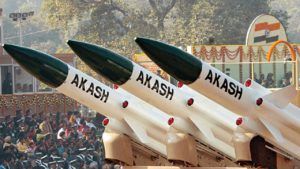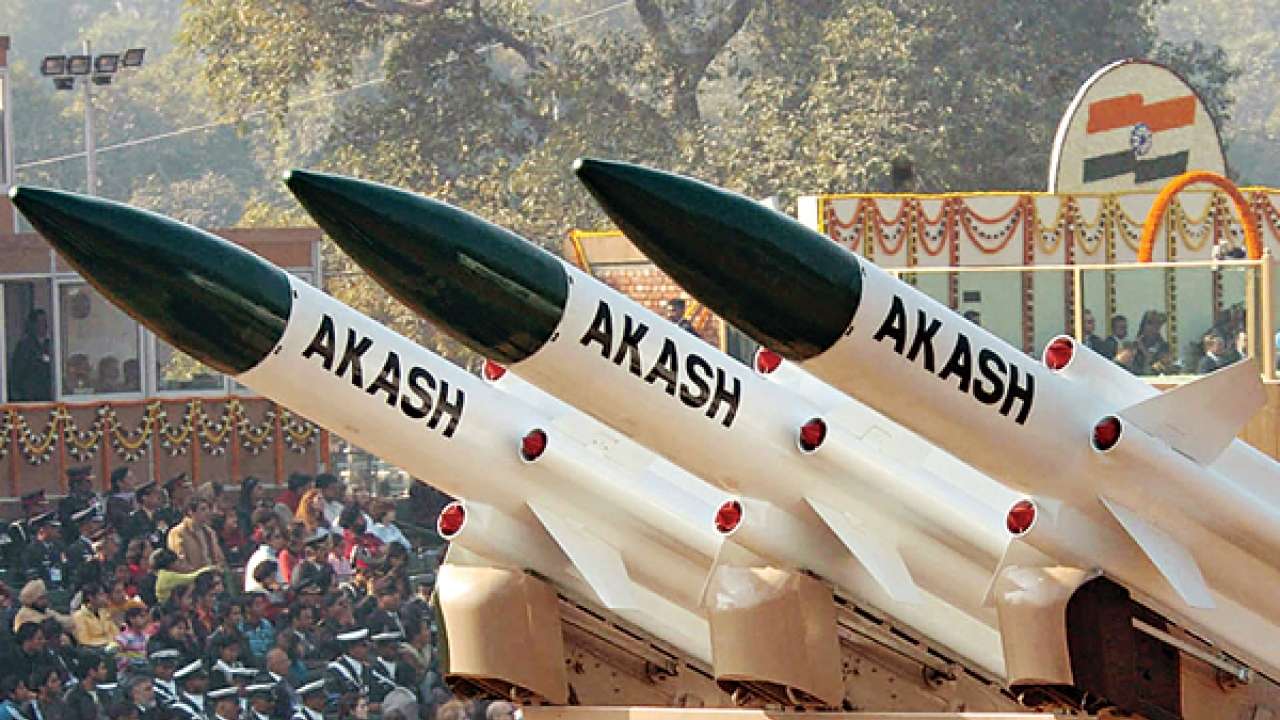
Akash is a medium-range mobile guided missile weapons system developed by the Defence Research and Development Organisation (DRDO) and created by Bharat Dynamics Limited (BDL) for Missile Systems, Bharat Electronics (BEL), Tata Power Strategic Engineering Division, and Larsen & Toubro for different radars, management centers, launcher systems in India. The missile system will target craft up to thirty kilometers away, at altitudes up to 18,000 m. It has the aptitude to neutralize aerial targets like fighter jets, cruise missiles, and air-to-surface missiles further as ballistic missiles. It’s in operational service with the Indian Army and therefore the Indian Air Force.
An Akash battery contains one Rajendra 3D passive electronically scanned array radiolocation and 4 launchers with 3 missiles every, all of that interlinked. Every battery will track up to sixty-four targets and attack up to twelve of them. The missile includes a sixty kilogram high-explosive, pre-fragmented load with a proximity fuse. The Akash system is totally mobile and capable of protecting a moving convoy of vehicles. The launch platform has been integrated with each wheeled and half-tracked vehicles. whereas the Akash system has primarily been designed as an Associate in air defense guided missile, it additionally has been tested in an exceeding missile defense role. The system provides air defense missile coverage for a neighborhood of 2,000 km². The Indian military’s combined orders of the Akash, together with radiolocation systems (WLR and Surveillance), have a complete price of ₹ 23,300 cr.
The Army’s radar and launchers are based on T-72 chassis designed by the Ordnance Factories Board’s Ordnance Factory Medak to accompany the Army’s fast-paced armored formations. The Air Force versions use a mixture of the detachable containers. The Air Force Akash launcher consists of a clastic trailer that is towed by Associate in Nursing Ashok Leyland truck, and which might be positioned autonomously. The Air Force launcher is meant by Larsen & Toubro put together with DRDO. each the military and Air Force launchers have 3 ready-to-fire Akash missiles every. The launchers will slew in each elevation and azimuth. The Army Self-Propelled Launcher (ASPL) is 360 degrees sewable and its arc in elevation is from six to sixty degrees. The Akash Air Force Launcher (AAFL) is 360 degrees sewable, in elevation it will fireplace from eight to seventy-five degrees all told directions counting on the mode of reading. Akash Air force launcher options Associate in Nursing All electro servo drive system for totally machine-driven and remote operation. To alter the Akash cluster to perform self-sufficing within the combat zone, a variety of supporting specialist vehicles are designed and developed. they’re mobile and field-worthy. Their style is predicated on the role and task to be performed and therefore the vehicles square measure consequently allotted to the cluster military installation, the Batteries, mechanical system space, and therefore the Field maintenance workshop. a number of the vehicles are the Missile Transportation Vehicle (MTV), the Transportation and Loading Vehicle (TLV), the Mobile Station for Missile Checkout (MSMC) Vehicle, the Air Compressor Vehicle (ACV), the Power Supply vehicles (GPSV, BPSV), the Engineering Support, Maintenance and Repair vehicles (GEM, BEM) and a number of others. These specialist vehicles assemble and prepare missiles, deliver them to Batteries, carry maintenance spares and fuel, and provide logistical engineering support. Their allocation provides for flexibility and independence to the complete Akash cluster.
Deployment
The Indian Air Force has deployed Akash at its bases in Gwalior (Maharajpur AFS), Jalpaiguri (Hasimara AFS), Tezpur, Jorhat, and Pune (Lohegaon AFS).
The Indian Army has deployed one Akash Regiment in June–July 2015, with the other.
Indian Army deployed Akash air implements of war on Line of Actual Control in Ladakh as tension rose between India and China 2020 China–India skirmishes.
Operators
India
- Indian Air Force — Eight squadrons in commission, seven additional ordered. every squadron contains one hundred twenty-five missiles.
- Indian Army — 2 regiments ordered, with deliveries beginning in 2015. 2 additional square measures planned to be ordered. every regiment contains six launchers
Export
It was additionally reported within the media that Byelorussia, Malaysia, Thailand, UAE, and Vietnam have shown interest in getting the Akash missile system.







